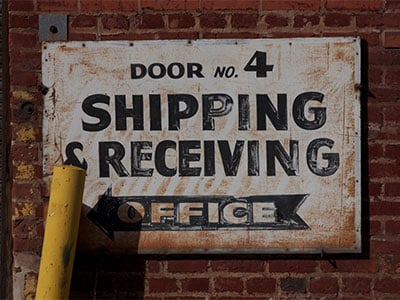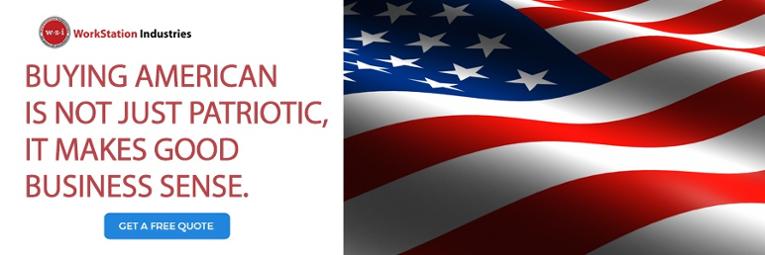When it comes to streamlining packaging operations, it’s important to find the right packaging workstation for your needs.
 While most packaging workstations are similar in function and design, every packaging function, even within the same shipping and receiving department has its own unique needs and requires flexible equipment options and storage capabilities to create an optimal work flow.
While most packaging workstations are similar in function and design, every packaging function, even within the same shipping and receiving department has its own unique needs and requires flexible equipment options and storage capabilities to create an optimal work flow.
Developing a customized and customized packaging workstation by utilizing a modular design that can be accessorized to meet many of your specific packaging needs can be accomplished easily with some forethought and planning.
Here are some things to consider when outfitting your packaging department with the right workstations to complete your tasks.
Consideration #1 - What tasks will be performed at each workstation?
Outlining the tasks preformed at the packaging workstation is a crucial first step. These tasks will be performed by workers in your packaging department and should include all potential functions. These tasks may include:
- Consolidating Orders: Space may be needed to perform this task.
- Check Line Items to Packing List: This process requires either space for writing or could require a computer with a monitor.
- Quality Control: If damage is detected, what happens to those items? How will the damaged item be replaced? How will the replacement process be initiated? Where will the partial order be staged until the new item is received?
- Packaging: What steps and product protection items are necessary to complete the packaging process?
- Address and Label: When, where and how will this process be completed?
- Manifesting: When, where and how will this happen? What type of manifesting is required? (UPS, FED-X, TRUCK)
- Staging and Transportation of Packed Orders: How will packed orders be staged? What system will be used to move packaged items to shipping?
Consideration #2: Determine how product will flow within your packaging department
Determining the movement of product at each stage of the packaging process from receipt of the items at your packaging station to your final packaged item being moved to the staging area to leave your facility, will help determine your equipment needs.
By creating a work flow model that seeks to minimize wasted movements, you can easily create a system that efficiently handles your packaging needs.
Straight-line flow patterns are generally the most efficient arrangements. This allows the packer access to the product on one side of the table. A section of tabletop is allocated to consolidate and check. The rest of the table top space is free to place items in the box, void fill, close, label and manifest the box. Off table space is provided to stage or convey the packed carton to shipping.
Consideration #3: Make a detailed list of equipment, materials and supplies to be stored at your packaging workstation
This is one of the most important steps to determine the design of your workstation. Key considerations include the type and volume of supplies needed to effectively handle your operation.
Items may include the following:
Machinery and Equipment
- CRT
- Keyboard
- CPU
- Printers
- Scanner
- Banding
- Tape Shooter
- Heat Sealer
- Gluer
- Staple Gun
- Air Tools
- Fill Systems
- Dunnage Dispenser
Packing Materials and Supplies
All packaging stations require a multitude of supplies. This part of your plan is one of the most important steps and requires a thorough inventory of items that will be used in your specific process.
Here are a few examples of needed items:
- Boxes - (List each size and the flat size)
- Bags and Envelopes - (List each size)
- Void Fill Material- (List each type, roll width and diameter or amount of space required for storage)
- Miscellaneous supplies - (List tapes, labels, envelopes, pens, markers and other small items)
Once you have your list of needed items, it is important to prioritize your list from those used most often to those which are used infrequently. Once you prioritize your list you will have a better idea of which items will be used frequently. These items should be located within arm’s length to minimize overuse injuries and create better ergonomics for your workers.
Even if you primarily use laboratory workstations, the same issues will apply to your situation.
Consideration #4: How to Design Packaging Workstation
The amount of equipment and supplies required for a packaging workstation may surprise you. Following are some suggestions and rules as you begin the design process.
- Try not use the table surface for storage, if possible.
- Develop ergonomic movement standards into the design to minimize worker injury.
- Place your most utilized supplies in the easiest to reach locations for efficiency.
- Efficiently utilize the space surrounding the packing station to keep areas clean and organized.
There are five locations around your packaging workstation to store and organize materials and supplies.
- Above the workstation
- Underneath the workstation
- Left side
- Right side
- Behind the packaging specialist
Storage
Above the table top is the prime ergonomic storage space and is usually used for your most frequently used supplies and equipment.
Below the table storage is ideal for items like roll materials, sheets, and literature, things that are not accessed as frequently. This is most inefficient workspace because of the workers need to bend over and awkwardly reach for items.
Your less frequently used materials can usually be stored below the top, on the sides or behind the worker. Items can also be shared amongst packaging specialists in a multiple workstation layout.
Various carts, shelves, stands and other products are available to maximize the use of this space.
As you decide where to store each item, determine what kind of table component will be the most efficient. Modular type systems have advantages over custom designed stations because they are generally more flexible. Choose accessory storage that lets you store material in ergonomic reach zones.
We recommend that you start your design with Production Bench with your specific depth and length requirements, then add either slotted uprights or slotted split shelf uprights. Once you have your basic configuration completed you can choose from the list of accessories below to best meet your specific needs.
Options include:
- Optional lower shelf with shelf dividers are used to help organize shipping boxes
- Optional bubble wrap holder supports 24” – 48” wide rolls
- Optional pull out drawers for storage, printer or UPS printer
- Cubbie slots for small storage of tape and/or supplies
- Swing arm flat screen monitor with keyboard, mouse
Completing a packaging workstation design usually requires compromises that make you choose between a series of desired features. By choosing a modular setup that is flexible, you can create a design that will provide the best solution for your needs.
Image Credit: Photo by Colin Ford | CC BY


